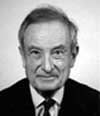
Jacques Friedel (CNRS gold medallist in 1970) and his followers have been pioneers in studying electronic structures in metals and alloys, then in spin glasses and surfaces. These early works put a particular emphasis on screening effects in metals: reality and application of Friedel spatial oscillations. Running from the 70’s, the study of electronic structures has evolved towards the strong correlation systems (transition metal oxides, organic conductors, etc.) and the novel electronic states of matter.
This was in particular the case of the low-dimensionality electronic conductors, some of the marking facts of which being the discoveries of the Peierls transition (1972) and of the first organic superconductor (1979), the evidence of local and long range orders of charge density wave kind, the studies of the spin density waves induced by the magnetic field, as well as the evidence of a pseudo-gap in the superconducting cuprates of high critical temperature. Also, it is in the continuation of the early works on ferromagnetic alloys in transition metals that Albert Fert (CNRS gold medallist in 2003) and his team, in collaboration with Thomson-CSF, discovered in 1988 the giant magnetoresistance phenomenon in ultrathin magnetic multilayers. This discovery has given rise to applications, the most important one concerning the reading heads of hard disks, and it opened the way to a new kind of electronics: spintronics. This research activity at the reduced scales, still actively present in the laboratory in the field of micro- and nano-magnetism, is now extending towards mesoscopic physics and nanosciences.
